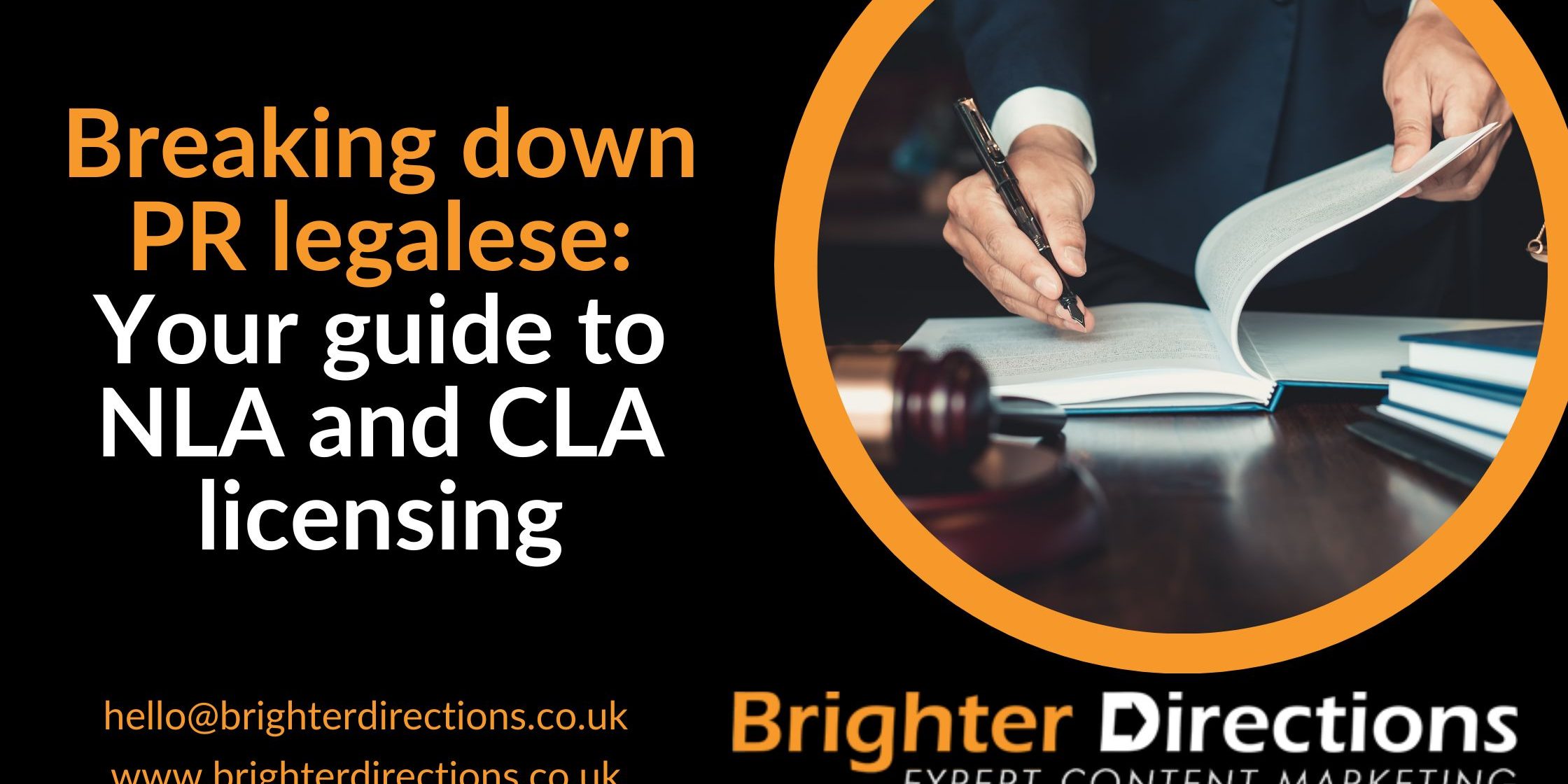PR is hard work. Securing positive coverage for a business, especially when it’s the editorial kind, is hard work. When it finally happens, when Financial Times, or The Tribune, or even Forbes features you in their publication, it’s natural to want to shout from the rooftops. But think twice before you do, because it might leave you in breach of copyright laws. In the UK, the reproduction and distribution of your hard-earned press coverage is managed and carefully monitored by licensing bodies like the Newspaper Licensing Agency (NLA) and the Copyright Licensing Agency (CLA). While it may seem irrational that publishers insist on a license before businesses promote their platforms for free, it’s proven that not having one will get you in trouble.
Licensing rules
There are a lot of license-granting organisations out there, but most of the UK media publications are either managed by the NLA or CLA. According to the regulations set by these governing bodies, a business cannot share any part of articles or features without a license, or without written permission from an official officer of the publishing house. Failing to have either one of them could result in thousands of pounds in unexpected fines and licensing fees.
Surprisingly, this also includes those snippets of articles that pop up automatically when you type in a URL on your LinkedIn page. Teaser images, headlines, or excerpts – anything that appears from the publisher’s owned-page to yours can and will leave you in breach of the law. But don’t be disheartened, there are some ways you could navigate this, without having to lose out!
How to share coverage without getting in trouble
- The very first thing you would do is check what licensing body manages the publication you’re trying to share coverage from. You can do this by checking if the publication is listed under a CLA or NLA title, or even consider emailing the journalist to double check.
– CLA: https://www.cla.co.uk/checkpermissions
– NLA: https://www.nlamediaaccess.com/title-search/
- If you do find the publication listed, fear not. You can still share the coverage, as much as you want, on your social media – as long as you’re rewording the content. Paid features or not, you cannot share anything directly from the feature. This includes screenshots of the article, headlines, excerpts, and even titles.
- You can share the URL everywhere on your social media, BUT you’ll need to share it as a simple link. The auto-generated snippet you see popping up every time you paste a link on your LinkedIn? That will need to be deleted before you hit share.
- Even though you can’t share images directly from the article, you can share images of your own that are still plenty relevant.
- Reword the content. Summarise the article in your own words, tell people why they should read it and find value, and paste the URL for them to dive right in. Make sure to tag the publication in the post, even go the extra mile and thank the journalist who made it happen. This increases your chances of getting some re-posts, as well as buying you some brownie points for future pieces.
- Share, re-share, and then share it a couple of times more. Make the best of the re-worded content and make sure to include the links of your hard-earned coverage across all of your communication channels. The news page on your website, your newsletters, and even your staff and associates’ social media channels are good places to boost your coverage.
- Feature their logos. While publications’ logos are also copyrighted by the NLA, it’s not uncommon to use them under an ‘as featured in’ section on your website.
- A simple and easy solution, work with publications that do not mandate an NLA or CLA license. Check back on the list and see if your relevant publications are covered by them, reach out to them if not!
- The last, but by no means the least, good option would be to get the license. If you’re a business projecting lots of PR coverage in the coming years, it’s worth investing in an official license. There are different options too, like the long-term kind or the single-use license that gives you distribution copyrights for that specific article you have secured.
Media licensing may seem like a minefield, but rest assured, it is one that can be navigated with ease once you know how, without losing out on maximising its benefits. If you have any questions or want to find out more about this, get in touch for a free consultation!







